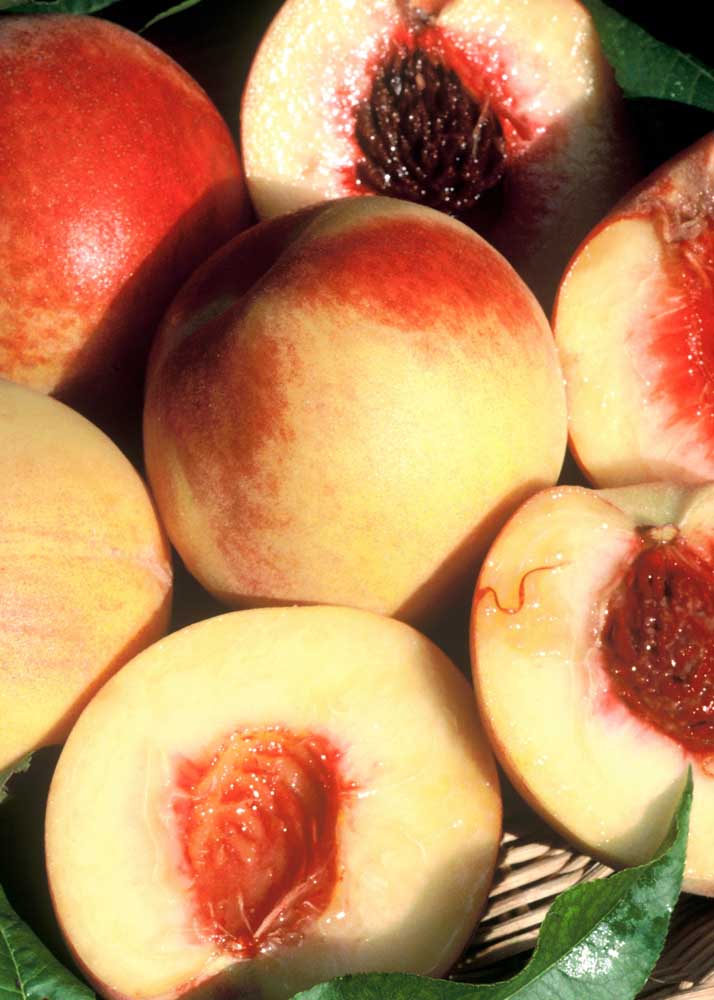Sperry: What’s happening to my beautiful plants?
Published 5:10 am Thursday, February 22, 2024

- The ideal freestone peach tree variety varies by region.
Dear Neil: I have kept beautiful plants for many years in the same place and in the same soil. The past two years it seems “black spot” has grown on all of them and some of them have died. This bougainvillea is an example. It hasn’t died yet, but it looks to be in poor health. Thank you for any advice you can offer.
I have several suggestions. Potting soil deteriorates after a couple of years. The organic matter that is mixed into it initially, whether peat moss, compost, coir fiber, or other, breaks down and no longer provides the aeration and other benefits it once did. Plants need to be taken out of their pots and repotted into fresh potting soil. However, since you gave me the specific example of a bougainvillea, and since you are in a part of Texas where winter temperatures have dropped significantly below freezing, I can only wonder if this plant has been protected each time that it’s gotten very cold. This is not a fungal disease problem such as “black spot.” That’s a rose disease that isn’t going to make the jump over to bougainvilleas. Judging from the looks of your plant, it’s time to start over this spring with a new plant and new potting soil.
Trending
Dear Neil: What is the ideal freestone peach tree variety?
It will vary with the part of the state where you’re gardening. I’m going to refer you to the Texas A&M Fact Sheet on peaches (http://tinyurl.com/52ekr395). For anyone who is a first-time peach grower in a home orchard setting, this will have outstanding information to get you started. Scroll down to see the map of the different chilling zones in Texas and then you’ll be able to choose from the recommended variety list. It’s a good idea to have two or more different varieties to ensure good cross pollination.
Dear Neil: Just a tip. I’ve been a vegetable gardener for many, many years. A few years ago, I had a stroke and lost much of the use of my dominant hand. I can’t operate a rototiller, so I now raise my vegetables in Gro-Bags and 5-gallon buckets with holes drilled for drainage. I’ve had very good success. I offer this encouragement in response to a letter you received a few weeks ago.
Thank you! I’m very grateful that you took time to do so, and I know many of my readers will be, too. I’m struggling with mobility issues myself due to psoriatic arthritis and side effects of a medication I was given, so I understand completely.
Dear Neil: We have overgrown cherry laurels and are wondering if they would survive a very hard, back-to-the-branches pruning where no leaves would be left? We have received conflicting advice.
That doesn’t sound good in the long run. Your plants are genetically predestined to grow right back to that same height and width, so you’re just buying yourself a few months or a year or two. In the meantime, you’ll be weakening them severely and they may not regrow uniformly at all. I guess you could try it since the only other alternative would be to take them out and replace them. But you need to get it done immediately. They are sisters to peaches and plums, and like their relatives, they’re ready to get spring underway. (If they were mine, I’d spend the time replacing them now rather than waiting.)
Trending
Dear Neil: I see sod trucks driving through town. Is it ok to plant new sod now? I have a large bare area beneath my pecan tree that I’d like to get covered.
That would dictate your planting St. Augustine, and I certainly would wait to plant it. All you would gain by laying St. Augustine sod this early would be a covering of the bare ground to prevent the tracking of mud and lessening of erosion. But the grass will be dormant when it arrives, and you’ll have a hard time telling if it’s really vigorous sod. Wait another 6 to 8 weeks. Oh, and be sure the bare areas get 6 hours of direct sunlight daily. That’s how much light St. Augustine (our most shade-tolerant grass) needs to thrive. The bare area may be there because of the shade. It would be economically best if you were to try a small amount of the new sod in a small area to see how it looks after a couple of months.
Dear Neil: I see garden pinks in the nursery now. Their label says that they’re perennials, but is that true here in Texas?
There are a couple of types of pinks that are reliably durable in Texas weather, notably our summers. However, most of what you’ll see in garden centers are cool-season annuals that will play out as it gets warm in May and especially June. You’ll want to start with new transplants each fall or late winter. Buy from a trusted independent retail garden center and ask the owner or manager.
Dear Neil: Is there any preventive treatment I can make now to avoid bagworms on my junipers this summer?
No, other than pulling off any existing bags that are attached to the twigs as soon as possible. Adult moths will emerge from them, fly, mate, and start the process over again. But there is no spray that will penetrate the bags and the eliminate the next generation of the pests.







